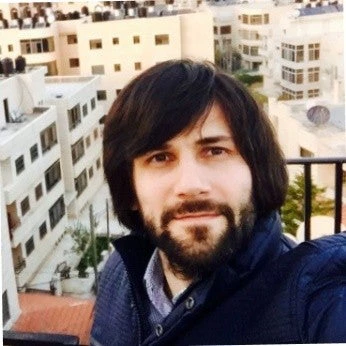 امرأة عربية تكتب على الكمبيوتر. الائتمان. تصوير: Kdonmuang / Shutterstock.com
امرأة عربية تكتب على الكمبيوتر. الائتمان. تصوير: Kdonmuang / Shutterstock.com
In the Middle East and North Africa (MENA), the coronavirus (COVID-19) is disproportionately affecting poor households, who are more likely to live in cramped conditions, often with elderly relatives, and to depend on informal sector jobs with no health insurance. Yet these households are the least likely to be heard through surveys, which increasingly use the internet for data collection.
A rapid increase in access to the internet offers both opportunities and challenges to the field of socioeconomic surveys. There’s considerable interest in modes of data collection during the COVID-19 pandemic. Internet surveys offer researchers a relatively cheap tool for rapid assessment in a context where face-to-face data collection is not possible. Hence many such surveys have been carried out and their results widely shared. But these may underrepresent many of the people we are particularly concerned about, such as the poor and vulnerable, people in rural areas or slums, and women. To illustrate this point, we look at internet use trends among different segments of the population in the region’s developing countries.
According to the International Telecommunications Union, internet use ranges from 30 percent to 80 percent across MENA (Figure 1). These numbers can mask variations in the intensity of use in each country. In order to check this, we explored 2018-19 data from Arab Barometer, which collects information about attitudes and values of the citizens in the Arab states. As shown in Figure 2, a substantial share of respondents use internet only a few days a week or even less: 30 percent, for example, in Algeria. If those who use internet infrequently have distinct characteristics, there would be some bias in the data obtained through internet surveys.
| Figure 1. % of individuals using internet in developing MENA countries in 2017/18 years |
| |
| Source: International Telecommunication Union. Note: In scope population can be different across countries. Arab States group used by ITU is quite broad and include rich Gulf countries and also such poor African countries as Somalia, Sudan and Comoros. |
| Figure 2. Intensity of internet usage in the MNA region in 2018/19 years, population 15+ |
| |
| Source: Arab Barometer, round 5. Note: Shares are calculated only among internet users. |
Let’s further explore how internet access differs across population groups. Figure 3 shows a gender gap in favor of men in many countries. The largest of these are observed in Tunisia, Egypt, Morocco, Yemen and Iraq.
| Figure 3. % of individuals using internet in developing MNA countries by gender, 15+ |
| |
| Source: Arab Barometer, round 5. |
Inequality in internet usage can also reflect the place of residence or the socioeconomic condition of the household. Inadequate infrastructure in rural areas, low computer literacy, and lack of money to purchase a device or internet subscription can limit access.
To explore these two dimensions, we use Arab Barometer data for the urban/rural divide and the most recent Household Budget Surveys (HBS) to consider the welfare divide.
There are several limitations in using HBS to measure internet usage. First, most surveys collect information at the household level. Second, in many countries, the question asks only about internet use at home, while connecting through mobile phones is not captured. Nevertheless, it will still be informative to know how the usage varies across welfare groups, even if overall levels are biased downward.
| Figure 4. Share of population with internet connection across rural and urban areas using Arab Barometer circa 2018, 15+ |
Figure 5. Share of population with internet connection in the household across consumption per capita quintiles using Household Budget Surveys |
| Source: Arab Barometer, round 5. |
|
| Note: If survey period bridges two years, the first year is selected for reporting even if majoriy of survey happens during the second year. Internet usage is defined different in each country. The broadest definition is used in the Palestinian Territories (PSE). |
|
We see a gap in internet usage between rural and urban areas in almost all countries of the region (Figure 4). The only exceptions are the highly urbanized Palestinian Territories and Lebanon. The income gradient is also highly pronounced, with much higher shares of the rich reporting internet usage as compared to the poor. This gap can reach 10 times between the poorest and richest quintiles (Figure 5).
So how can researchers and policy makers gather information safely during the pandemic, while avoiding the biases associated with internet-based data collection? A first step is knowing the biases in your data, checking the population being reached, and trying to understand the representativeness of their answers. We also suggest using multiple sources, for triangulation and to achieve better coverage: running parallel phone and internet surveys, conducting interviews with service providers and local authorities, or targeting phone surveys with selected groups of people, such as beneficiaries of social assistance programs, individuals with disabilities, the poorest, the elderly, etc.
We should not refrain from using internet surveys. They can play an important role in rapid collection of household and individual level information. But, even with the rapid expansion of internet access, the results from such surveys are disproportionately likely to reflect the opinions of men, urban dwellers, and wealthier people. We should take this bias into account, as we may be missing the views from some of the poor and vulnerable that we are most interested in hearing from.








Join the Conversation